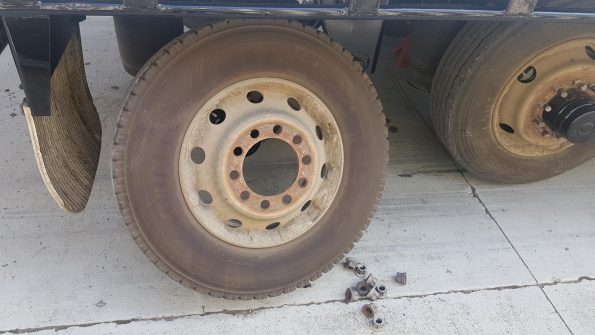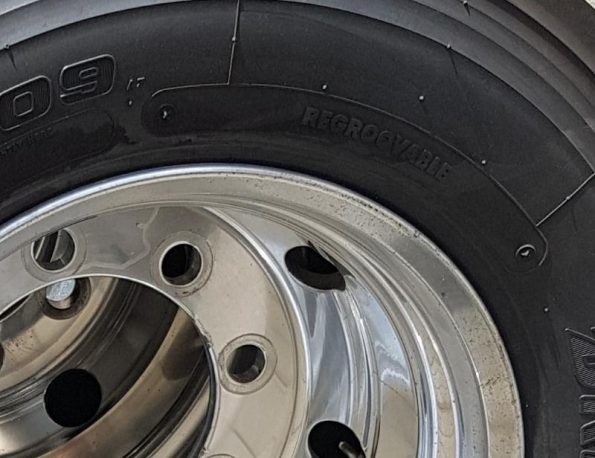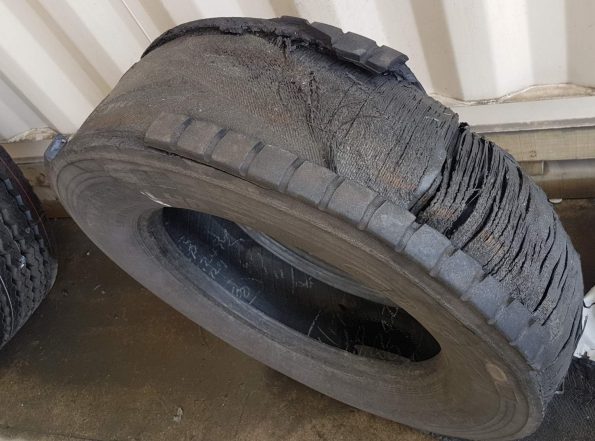Retreads are tyres which have had new tread (grooves) applied to extend their life. They were very popular for passenger cars a few years but more recently have fallen out of favour as cheaper new tyres have narrowed the price gap.
Why do people and companies choose retread tyres?
Primarily retreads are chosen because they are cheaper. Retreads are very popular for heavy vehicles and commercial aeroplanes due to dramatically extending the life of the tyre for much less cost; when you are running 18 wheels, the cost of replacing tyres really adds up. A trailer tyre can be good for over half a million kilometres as a retread. Some transport operators only choose retreads for non-steer, non-drive axles as tyres on those axles suffer more stress.
Retreads are also much more environmentally friendly as it’s a way of recycling the majority of the tyre several times over. A new truck tyre weighs around 70-75kg. Rather than using 70kg of raw materials to replace the tyre completely, only around 20kg is required for a retread, saving hundreds of millions of litres of oil per year and drastically reducing the need to take natural resources from the environment.

Is a retreaded tyre safe?
Some insurance companies don’t recommend retreads for passenger cars as it’s difficult to understand the history of the tyre, there’s the potential for the new tread to separate from the old casing, and the old casing has had more wear.
Some companies say that retreads are less stable at high speed. However, all retreads are manufactured to a minimum speed rating of 140km/h while the tyre casing itself must be rated to 180km/h. Retread tyres are no more likely to fail than a new tyre as long as the retreading was done correctly.
Other insurance companies cite inferior grip in wet weather and poor braking performance. However, a comparison is rarely given against tyres of a similar price (budget tyres often perform poorly in tests for grip and braking capability).
Retread tyres usually wear out slightly quicker than new tyres, but as they are cheaper overall, it’s worth doing it.

In some countries you must not put a retread tyre on a steering axle on certain vehicles.
What about those tyre casings that you see on the side of the road?
A heavy vehicle tyre on a trailer axle can degrade and leave the rim before the driver realises. The degradation that causes this could be from under-inflation, poor tyre maintenance or a puncture; it is not necessarily a retread.
What does a delaminated retread look like?

How is retreading done?
There are four ways of accomplishing a retread:
- Pre-cure: the tread is affixed to the tyre casing using high-strength cement. This allows for a wide variety of tyre diameters and widths but does leave a noticeable seam where the two ends meet.
- Hot applied: a raw rubber layer is applied to the casing which is then vulcanised in a press at high temperature and pressure
- Mold cure: raw rubber is applied to the casing which is then placed in a mold which gives the tyre its tread. This is less common as it requires a different mold for each tyre diameter and width.
- Bead-to-bead molding: this involves the addition of new sidewalls as well as the tread and isn’t very common.
Tyre and wheel maintenance
Retreads can be balanced just like any other tyre. All you need to do, as a driver, is take care of them as you would with a new tyre: ensure they are at the correct pressure and inspect them frequently for cuts or bulges in the sidewalls and for items stuck in the grooves.
